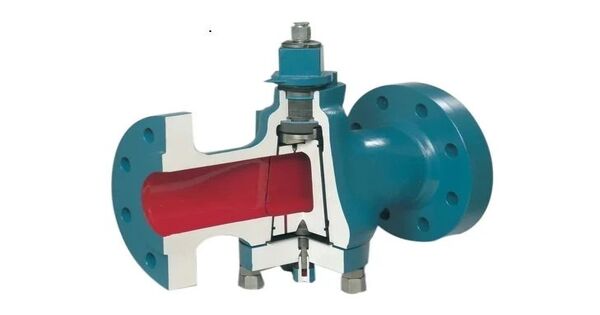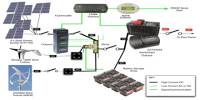Plug valves are industrial valves that regulate the flow of fluids through pipelines. These are valves having cylindrical or conically tapered “plugs” that can be rotated within the valve body to control flow through it. They are made up of a cylindrical or conically tapered plug with a hole or port through the middle. The plug can be rotated within the valve body to control the flow of fluid.
Plug valves contain one or more hollow tunnels that run sideways through the plug, allowing fluid to flow through when the valve is open. Plug valves are simple and cost-effective. Fluid can flow through when the port is aligned with the valve’s intake and outlet; however, when the plug is rotated to stop the flow, the port becomes perpendicular to the pipeline, prohibiting fluid passage.
Here are some key features and applications of plug valves:
- Design: Plug valves can have different designs, including lubricated plug valves, non-lubricated plug valves, and sleeved plug valves. Lubricated plug valves use a lubricant to reduce friction and wear between the plug and the valve body, while non-lubricated valves are designed for applications where contamination by lubricants is a concern. Sleeved plug valves have a sleeve around the plug to provide tight sealing.
- Operation: Plug valves are typically operated manually, using a handwheel or lever to rotate the plug. However, they can also be automated using actuators for remote operation in industrial settings.
- Sealing: Plug valves provide tight shut-off capabilities, making them suitable for applications where leakage prevention is critical. The sealing mechanism can vary depending on the design of the valve, with options such as elastomer sleeves, metal-to-metal seals, or soft seated plugs.
- Versatility: Plug valves can handle a wide range of fluids, including corrosive and abrasive materials, as well as slurries. They are commonly used in industries such as oil and gas, chemical processing, water treatment, and wastewater management.
- Pressure and Temperature: Plug valves are available in various pressure ratings and temperature ranges to suit different operating conditions. They can be used in high-pressure and high-temperature applications.
When the plug is conically tapered, the stem/handle is usually attached to the larger diameter end of the plug. Plug valves do not often have bonnets, but rather have the end of the plug with the handle exposed or mostly exposed to the outside. In such circumstances, there is usually very little stem. The stem and handle are sometimes combined in one piece, with a basic, approximately L-shaped handle affixed to the end of the plug. The opposite end of the plug is frequently exposed to the outside of the valve, but with a mechanism that keeps the plug inside the body.
Overall, plug valves provide dependable and efficient flow control in a variety of industrial applications due to their simple design, tight shut-off capabilities, and adaptability.
















